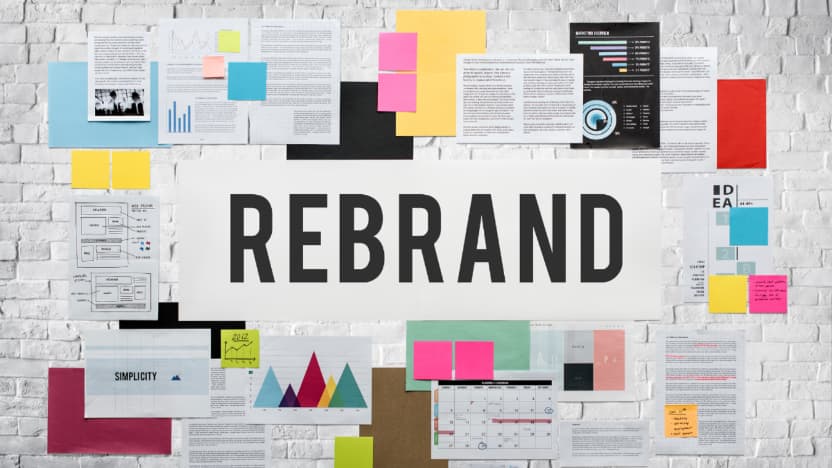Modern rebranding is a lens into business strategy, showing how companies adapt to shifting audiences, emerging technologies, and competitive pressures.

Look closer, and you notice the pattern. (Source: freepik)
It started with a series of name changes that caught everyone’s attention. Hindalco repositioned itself from a metals supplier to an engineered solutions company. Swan Energy became Swan Corp, reflecting its expansion into defence, real estate, and manufacturing. Even Bajaj Finserv dropped Allianz from its insurance arms, proudly announcing 100 per cent Indian ownership with the tagline ‘100% Bajaj. Made in India. Made for India. Made by India.’
Look closer, and you notice the pattern. Paytm is rebranding to reflect its AI ambitions. H&M is stepping into India’s beauty market. Mahindra & Mahindra has acquired SML Isuzu and plans a rebrand to solidify its commercial vehicle portfolio. What do these moves have in common? They are all about growth, relevance, and speaking to the audience of today—not yesterday.
This is not just logo tweaking or a fancy tagline. These are signals. Signals that brands are listening, learning, and evolving. That they understand the world around them is changing fast. And that staying familiar is no longer enough. Consumers today want brands that feel modern, aligned with their values, and ready to move with them.
Take Swan Energy. The company has been around for over a century, starting in textiles as Swan Mills. Today it calls itself Swan Corp. According to a spokesperson, the new identity reflects its move from energy to a diversified industrial conglomerate covering defense, real estate, and manufacturing. A stylised swan in upward motion symbolises progress, resilience, and a forward-looking mindset.
Or Hindalco. Once just a metals supplier, it now presents itself as an engineered solutions company. Its focus is on sectors like electric mobility and renewable energy. This is not just a logo change or a new tagline. It is a statement that the company is aligning with the future while leveraging its industrial strength with the new tagline "Engineering Better Futures”.
Even smaller brands are following the pattern. Chanchal Gangadharan of Indel Money notes that digital-first realities and shifting tastes make outdated brands look irrelevant. Younger consumers want authenticity and freshness while competitive pressure forces change. “Rebranding today is not just cosmetic. It signals transformation, attracts new audiences, and ensures continued relevance in a hyper-connected, image-driven marketplace,” he says.
Akshat Seth, Managing Director of BirlaNu, puts it more bluntly. Brands can no longer be content with being recognisable. They have to feel relevant and in step with the values people care about. AI, sustainability, transparency, digital fluency—these are not just buzzwords. They are changing how consumers relate to brands. According to Seth, rebranding today is as much about aligning with movements as with markets.
This is a pattern that we have seen before, but the pace is faster and the stakes higher. N Chandramouli, CEO, TRA Research explains that audience expectations are evolving rapidly. Some technologies create excitement, others uncertainty. The result is that brands seeking relevance with Gen Alpha and other younger generations must rethink identity beyond traditional branding models.
Does it work? Do rebrands really shift consumer loyalty or are they just cosmetic? Gangadharan says strong rebrands reflect deeper shifts. They are about sustainability, inclusivity, and digital agility. ROI is measured in recall, engagement, perception, and even talent or investor appeal. A successful rebrand sustains relevance rather than delivering short-lived visibility.
Seth adds that the decibel of noise a rebranding makes varies from company to company. Digital-first rollouts often target existing stakeholders before the wider public, giving brands the space to test and refine their story. “When a rebrand reflects real shifts, it can absolutely change how people engage with the brand,” he says.
Chandramouli frames the ultimate test in consumer terms. Buying Intent is the sum of Brand Trust and Brand Desire. A brand that is noticed but not valued is only half successful. One that increases Buying Intent has strengthened its position in the hearts and minds of stakeholders.
Some sectors rebrand more often than others. Tech, digital platforms, FMCG, and BFSI are constantly evolving to keep up with innovation and consumer expectations. Gangadharan calls these industries change bellwethers. Industrial or manufacturing companies, on the other hand, rebrand less frequently. Seth notes that in fast-moving markets rebranding is a survival tool, while in mature sectors it is a strategic reset undertaken with caution.
There is a delicate balance between refreshing identity and retaining legacy. Gangadharan says too-frequent rebrands can erode value, while clinging to heritage risks irrelevance. Seth frames the strongest rebrands as weaving continuity into change. Keep the story of where you came from while showing clearly where you are headed. Chandramouli adds that heritage and evolution are most effective when held in deliberate tension.
So what does this all mean for brands and consumers? Rebranding is no longer a luxury or a cosmetic tweak. It is a strategic tool to stay relevant in a fast-moving world. Whether it is a century-old conglomerate or a young consumer brand, the message is clear. Brands must evolve with their audiences, not just for today but for the markets and movements of tomorrow.
In a way, watching these transformations is like watching a family grow. You recognise the old face but notice a new spark, a shift in posture, and a confidence in the way it moves forward. And just like with people, that growth is what keeps them alive in your memory and in your choices.
Empower your business. Get practical tips, market insights, and growth strategies delivered to your inbox
By continuing you agree to our Privacy Policy & Terms & Conditions
